Some microchips feature more than 50 billion tiny transistors that are 10,000
times smaller than the width of a human hair. They are made on gigantic,
ultraclean factory room floors that can be seven stories tall and run the
length of four football fields.
اضافة اعلان
Microchips are in many ways the lifeblood of the
modern economy. They power computers, smartphones, cars, appliances, and scores
of other electronics. But the world’s demand for them has surged since the
pandemic, which also caused supply-chain disruptions, resulting in a global
shortage.
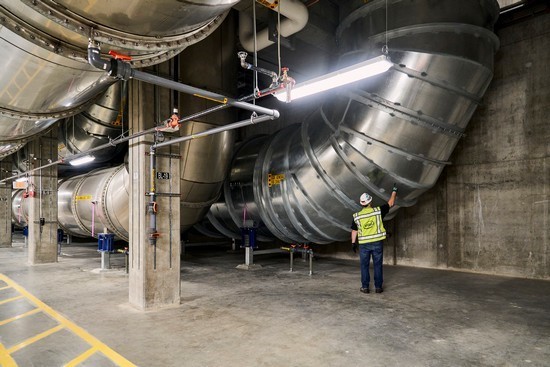 Large ducts carry gases away from processing machines at the Intel chip-manufacturing plant in Hillsboro, Oregon, on September 22, 2021.
Large ducts carry gases away from processing machines at the Intel chip-manufacturing plant in Hillsboro, Oregon, on September 22, 2021.
That, in turn, is fueling inflation and raising
alarms that the
US is becoming too dependent on chips made abroad. The US
accounts for only about 12 percent of global semiconductor manufacturing
capacity; more than 90 percent of the most advanced chips come from Taiwan.
Intel, a
Silicon Valley titan that is seeking to
restore its longtime lead in chip manufacturing technology, is making a $20
billion bet that it can help ease the chip shortfall. It is building two
factories at its chip-making complex in Chandler, Arizona, that will take three
years to complete, and recently announced plans for a potentially bigger
expansion, with new sites in New Albany, Ohio, and Magdeburg, Germany.
Why does making millions of these tiny components
mean building — and spending — so big? A look inside Intel production plants in
Chandler and Hillsboro, Oregon, provides some answers.
What chips do
Chips, or integrated
circuits, began to replace bulky individual transistors in the late 1950s. Many
of those tiny components are produced on a piece of silicon and connected to
work together. The resulting chips store data, amplify radio signals and
perform other operations; Intel is famous for a variety called microprocessors,
which perform most of the calculating functions of a computer.
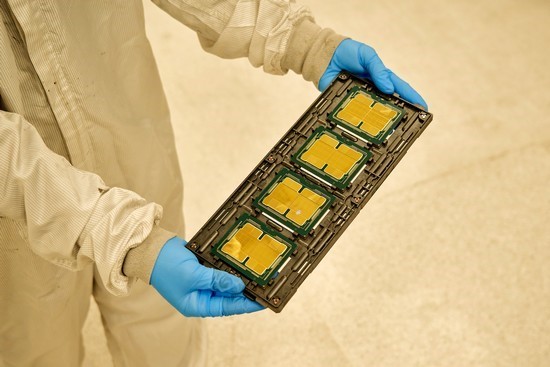 An Intel employee with a tray of Ponte Vecchio microchips before the heat spreader is attached at the company’s complex in Chandler, Arizona, on November 17, 2021.
An Intel employee with a tray of Ponte Vecchio microchips before the heat spreader is attached at the company’s complex in Chandler, Arizona, on November 17, 2021.
Intel has managed to shrink transistors on its
microprocessors to mind-bending sizes. But the rival
Taiwan Semiconductor Manufacturing Co. can make even tinier components, a key reason Apple chose it
to make the chips for its latest iPhones.
Such wins by a company based in Taiwan, an island
that
China claims as its own, add to signs of a growing technology gap that
could put advances in computing, consumer devices and military hardware at risk
from both China’s ambitions and natural threats in Taiwan such as earthquakes
and drought. And it has put a spotlight on Intel’s efforts to recapture the
technology lead.
How chips are made
Chipmakers are packing more and more transistors onto each piece of
silicon, which is why
technology does more each year. It’s also the reason that
new chip factories cost billions and fewer companies can afford to build them.
In addition to
paying for buildings and machinery, companies must spend heavily to develop the
complex processing steps used to fabricate chips from plate-size silicon wafers
— which is why the factories are called “fabs”.
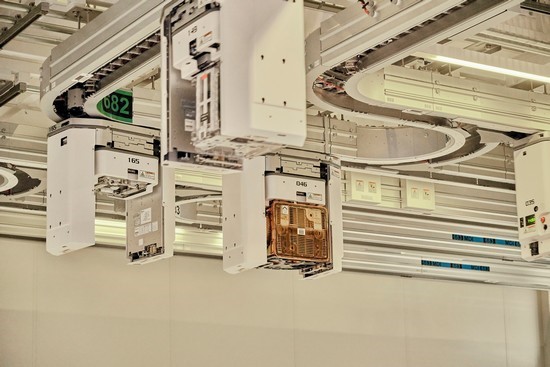 Pods holding up to 25 of the silicon wafers used to make microchips move on automated overhead tracks at Intel’s complex in Chandler, Arizona, on November 17, 2021.
Pods holding up to 25 of the silicon wafers used to make microchips move on automated overhead tracks at Intel’s complex in Chandler, Arizona, on November 17, 2021.
Enormous machines
project designs for chips across each wafer, and then deposit and etch away layers
of materials to create their transistors and connect them. Up to 25 wafers at a
time move among those systems in special pods on automated overhead tracks.
Processing a wafer
takes thousands of steps and up to two months. TSMC has set the pace for output
in recent years, operating “gigafabs,” sites with four or more production
lines. Dan Hutcheson, vice chair of market-research firm TechInsights,
estimated that each site can process more than 100,000 wafers a month. He
estimated the capacity of Intel’s two planned $10 billion facilities in
Arizona at roughly 40,000 wafers a month each.
How chips are
packaged
After processing, the wafer is sliced into individual chips. These are
tested and wrapped in plastic packages to connect them to circuit boards or
parts of a system.
That step has
become a new battleground, because it is more difficult to make transistors
even smaller. Companies are now stacking multiple chips or laying them side by
side in a package, connecting them to act as a single piece of silicon.
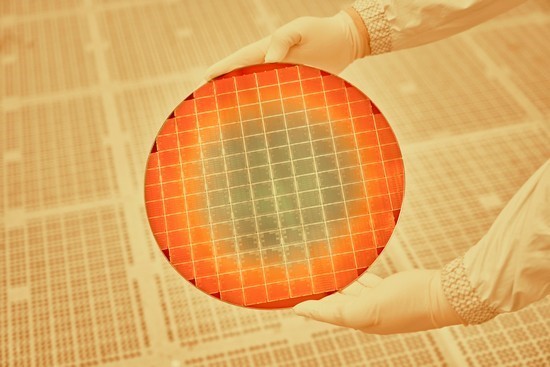
Where packaging a
handful of chips together is now routine, Intel has developed one advanced
product that uses new technology to bundle a remarkable 47 individual chips,
including some made by TSMC and other companies as well those produced in Intel
fabs.
What makes chip
factories different
Intel chips typically sell for hundreds to thousands of dollars each.
Intel in March released its fastest microprocessor for desktop computers, for
example, at a starting price of $739. A piece of dust invisible to the human
eye can ruin one. So fabs have to be cleaner than a hospital operating room and
need complex systems to filter air and regulate temperature and humidity.
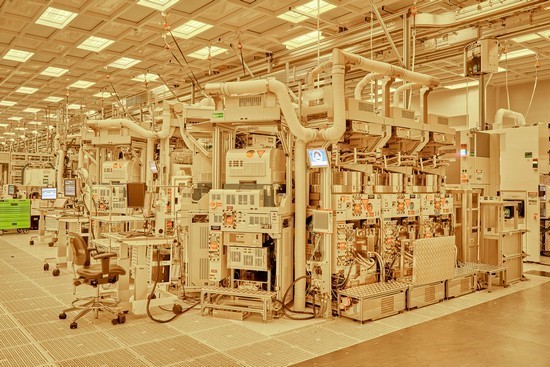
Fabs must also be
impervious to just about any vibration, which can cause costly equipment to
malfunction. So fab clean rooms are built on enormous concrete slabs on special
shock absorbers.
Also critical is
the ability to move vast amounts of liquids and gases. The top level of Intel’s
factories, which are about 22 meters tall, have giant fans to help circulate
air to the clean room directly below. Below the clean room are thousands of
pumps, transformers, power cabinets, utility pipes and chillers that connect to
production machines.
The need for water
Fabs are water-intensive
operations. That’s because water is needed to clean wafers at many stages of
the production process.
Intel’s two sites in Chandler collectively draw
about 11 million gallons of water a day from the local utility. Intel’s future
expansion will require considerably more, a seeming challenge for a
drought-plagued state like Arizona, which has cut water allocations to farmers.
But farming actually consumes much more water than a chip plant.
Intel says its Chandler sites, which rely on
supplies from three rivers and a system of wells, reclaim about 82 percent of
the freshwater they use through filtration systems, settling ponds and other
equipment. That water is sent back to the city, which operates treatment
facilities that Intel funded, and which redistributes it for irrigation and
other nonpotable uses.
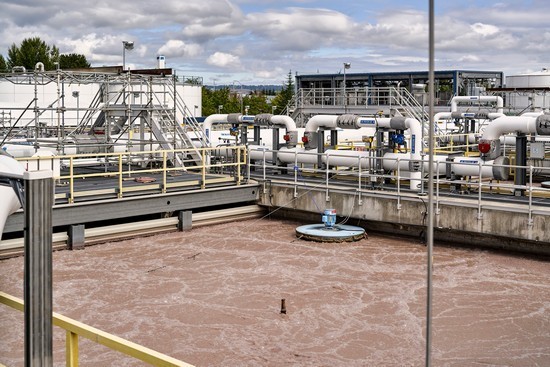 The water treatment plant at the Intel chip-manufacturing plant in Hillsboro, Oregon, on September 22, 2021.
The water treatment plant at the Intel chip-manufacturing plant in Hillsboro, Oregon, on September 22, 2021.
Intel hopes to help boost the water supply in
Arizona and other states by 2030, by working with environmental groups and
others on projects that save and restore water for local communities.
How fabs are built
To build its future
factories, Intel will need roughly 5,000 skilled construction workers for three
years.
They have a lot to do. Excavating the foundations is
expected to remove 890,000 cubic yards of dirt, carted away at a rate of one
dump truck per minute, said Dan Doron, Intel’s construction chief.
The company expects to pour more than about 340,227
cubic meters of concrete and use 100,000 tonnes of reinforcement steel for the
foundations — more than in constructing the world’s tallest building, the in Dubai, the UAE.
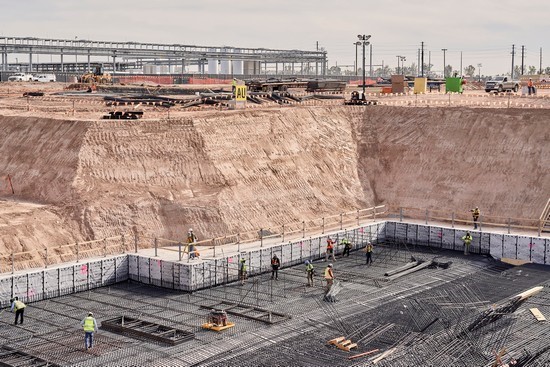
Some cranes for
the construction are so large that more than 100 trucks are needed to bring the
pieces to assemble them, Doron said. The cranes will lift, among other things,
55-tonne chillers for the new fabs.
Patrick Gelsinger, who became Intel’s CEO a year ago, is lobbying Congress to provide
grants for fab construction and tax credits for equipment investment. To manage
Intel’s spending risk, he plans to emphasize construction of fab “shells” that
can be outfitted with equipment to respond to market changes.
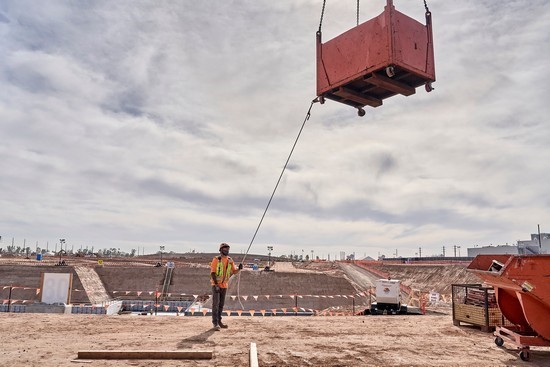
To address the chip shortage, Gelsinger will have to make
good on his plan to produce chips designed by other companies. But a single
company can do only so much; products like phones and cars require components
from many suppliers, as well as older chips. And no country can stand alone in
semiconductors, either. Though boosting domestic manufacturing can reduce
supply risks somewhat, the chip industry will continue to rely on a complex
global web of companies for raw materials, production equipment, design
software, talent, and specialized manufacturing.
Read more Technology
Jordan News



